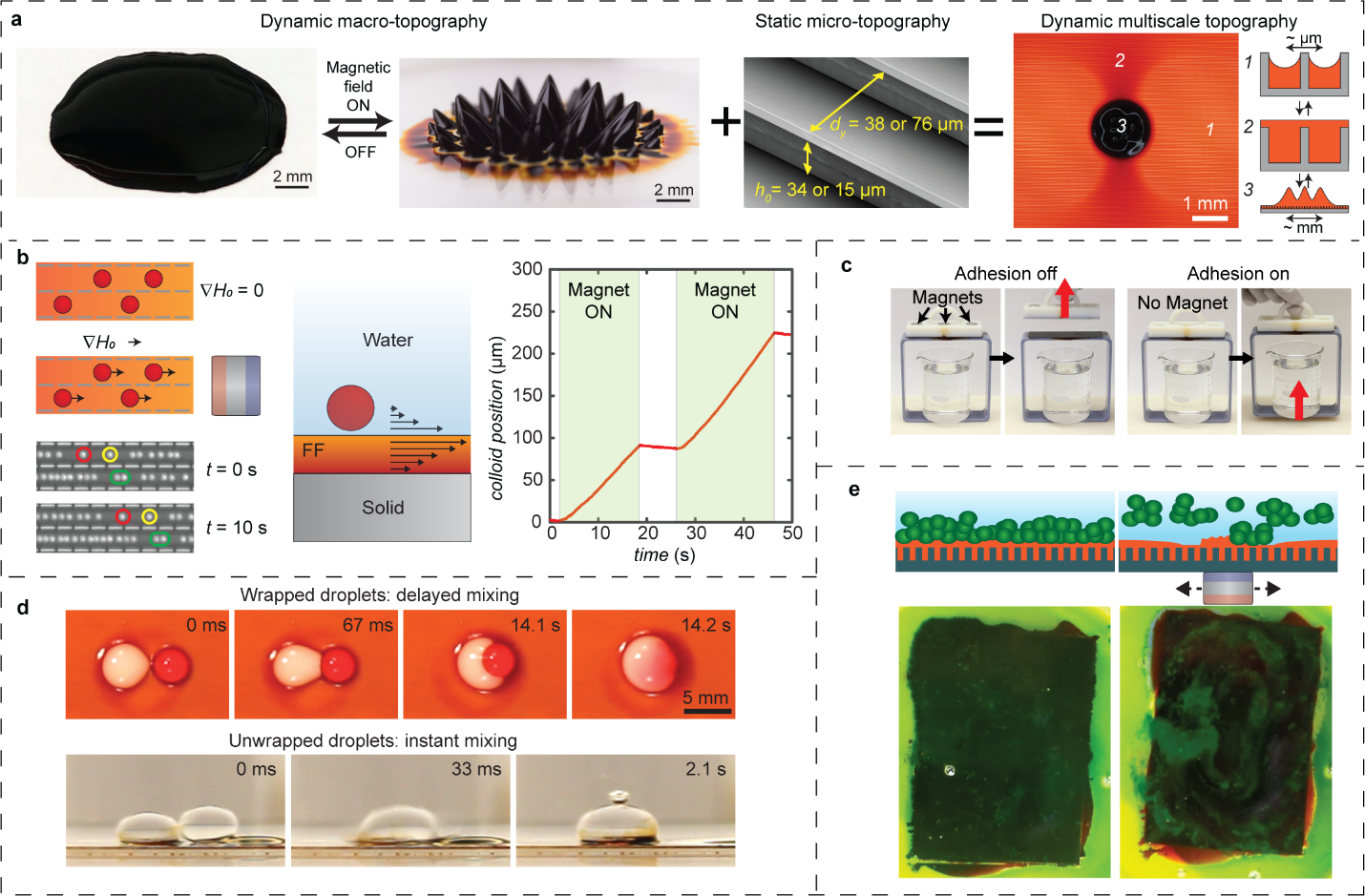Enhanced Flexible Mold Lifetime for Roll‐to‐Roll Scaled‐Up Manufacturing of Adhesive Complex Microstructures
Bioinspired Microstructured Adhesives with Facile and Fast Switchability for Part Manipulation in Dry and Wet Conditions
Smart Materials for manipulation and actuation of small-scale structures
3D nanofabrication of various materials for advanced multifunctional microrobots
Liquid Crystal Mesophase of Supercooled Liquid Gallium And Eutectic Gallium–Indium
Machine Learning-Based Pull-off and Shear Optimal Adhesive Microstructures
Information entropy to detect order in self-organizing systems
Individual and collective manipulation of multifunctional bimodal droplets in three dimensions
Microrobot collectives with reconfigurable morphologies and functions
Self-organization in heterogeneous and non-reciprocal regime
Biomimetic Emulsion Systems
Giant Unilamellar Vesicles for Designing Cell-like Microrobots
Bioinspired self-assembled colloidal collectives drifting in three dimensions underwater
Multifunctional ferrofluid-infused surfaces with reconfigurable multiscale topography

Developing adaptive materials with changing geometries in response to external stimuli provides fundamental insights into the links between the physical forces involved and the resultant morphologies and creates a foundation for technologically relevant dynamic systems. Recently, gels, polymers, composites and slippery surfaces have been explored as reconfigurable surface to control interfacial properties. However, these concepts exhibit a limited range of topographical changes and thus a restricted scope of function.
In collaboration with a team of researchers, led by Prof. Joanna Aizenberg at Harvard University, we have developed a multifunctional ferrofluid-containing liquid infused porous surfaces (FLIPS) with dynamic reconfigurable multiscale topography. FLIPS is a composite surface, made up of two distinct parts: a micro-structured solid substrate and a ferrofluid, which consists of magnetic particles suspended in a liquid (a). We demonstrate the applications of FLIPS at multiple length scales, including manipulation of colloidal particles at micron scale (b), manipulation of droplets at millimeter scale (d), switchable adhesion (c) and friction, pumping, and biofilm removal at centimeter scale (e). Each of these applications can be further extended. Our results suggest that FLIPS allows much more diverse combinations of functions and capabilities than surfaces that have only a simple, single-scale topographical response. This could be a platform for a lot of future technologies.
Members

